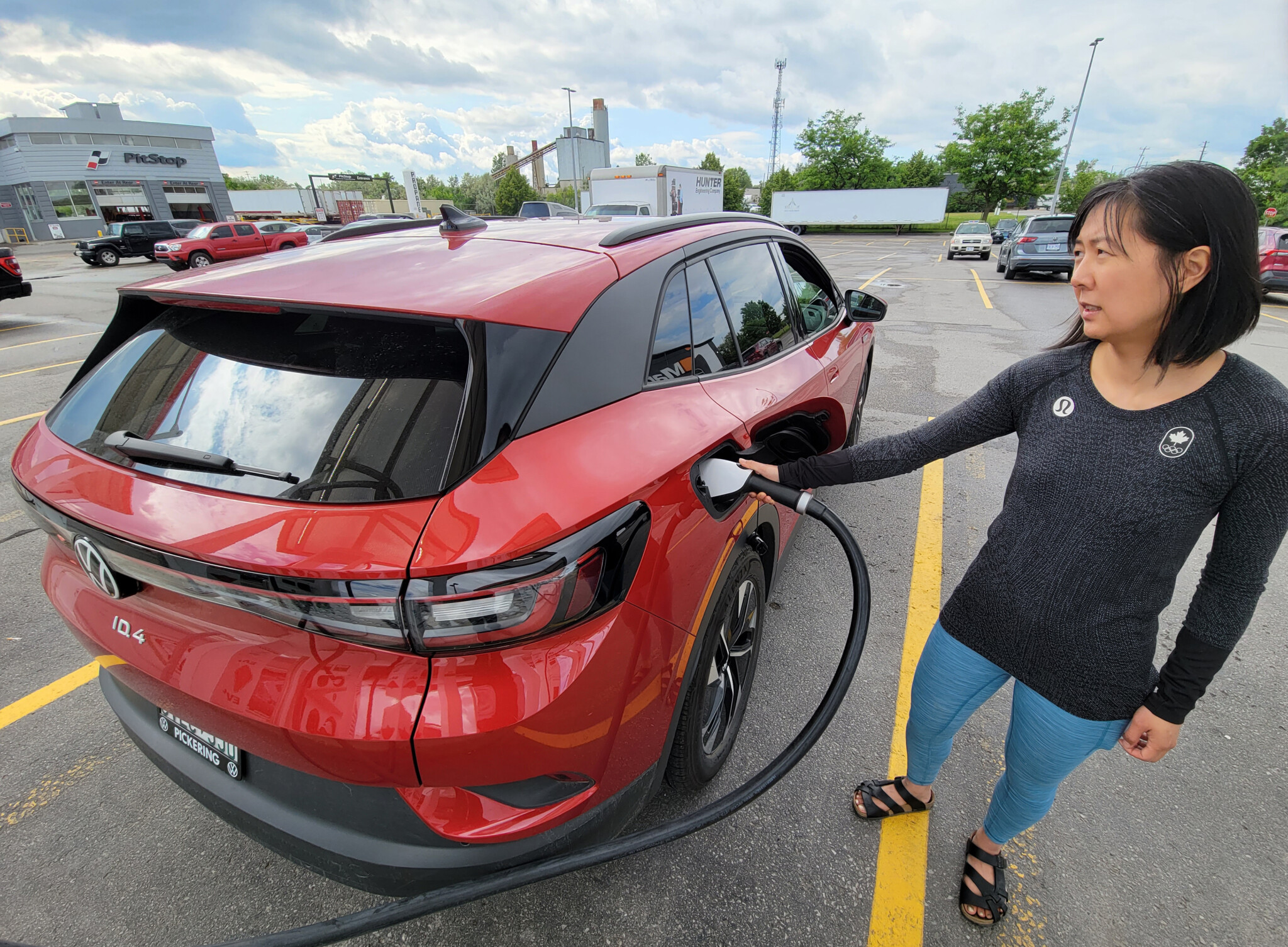EV sales in Canada almost halved, dropping 39.2 percent, year over year, in the second quarter of 2025, according to Statistics Canada data. Industry experts point to the precipitous drop in sales as further indication that the average Canadian consumer still doesn’t see an electric vehicle as a viable alternative over that of a combustion engine or hybrid.
“We have to distinguish between what we say we will do, or what we want to do, or what we believe in, versus what we do do. And this is a sample of that where…you go look at the actual sales, and they’re less than double digits,” Sprott School of Business associate professor Ian Lee told The Hub in an interview.
“The sales are indicating that Canadians still have a great deal of skepticism…that it’s not yet a mature technology, and the government leaders have got way, way ahead of consumer behaviour…with EV mandates,” Lee added.
Fewer Canadians bought new plug-in hybrid EVs in the second quarter, too, with sales sinking by 2.2 percent, suggesting consumers are still wary of EVs due to lack of range, higher sticker price, long charging times, and unreliable charging station infrastructure network.
“Clearly, if we want to achieve higher adoption levels in [Canada], we’re going to have to get at the barriers to EV adoption, and those haven’t been adequately dealt with,” Canadian Vehicle Manufacturers’ Association president Brian Kingston explained in an interview with The Hub.
“Charging infrastructure is the biggest challenge. We have a charging infrastructure [gap] of 65,000 public chargers this year alone. That has to be closed if we’re going to have any hope of getting higher levels of EV adoption on the timelines that the government was anticipating,” Kingston said.
Not only is there a shortage in charging station availability across Canada, but current charging stations aren’t reliable.
“There’s been a complete lack of focus on charger reliability, and we’re seeing more and more of that from EV drivers, that they find the infrastructure is simply not reliable, and that’s a huge challenge,” Kingston said. This transition only works if it’s convenient.”
In the last decade, Natural Resources Canada alone has spent over $1 billion between various EV subsidies, including making “chargers more accessible for Canadians.” Quebec, along with the federal government, spent through its Roulez Vert program, totalled $2.3 billion in support of EV adoption. Meanwhile, Ontario and the federal government, in an earlier Trudeau-era agreement, spent an estimated $28.2 billion in subsidies for the Stellantis-LGES and Volkswagen battery manufacturing plants.
The Canada Infrastructure Bank (CIB) has committed a minimum of $500 million to support the Charging and Hydrogen Refuelling Infrastructure Initiative. CIB also announced a $194 million partnership with Jolt earlier this year.
In spite of these efforts to increase EV adoption, Kingston says the number of charging stations isn’t meeting the government’s targets or those needed for consumer demand.
Although EV sales lowered in the second quarter of 2025, the total number of new vehicle registrations—541,566—jumped 5.9 percent compared to this time last year, indicating consumers prefer more reliable hybrids and gas vehicles.
“I’m a data guy; of the 8 percent of sales, I’ll bet you, those are all urban users. These are people not going on long-haul trips. These are people using the car just inside the city,” Lee explained.
Last week, Prime Minister Mark Carney announced the Government of Canada was pausing the EV mandate for 60 days as it reviews the hard-line policy put in place by the Trudeau government.
“This was a government failure, because the government, instead of saying, we’re going to create the infrastructure, they went out and tried to…browbeat consumers, and by threatening them, saying, ‘Oh, you don’t buy that car. You know, in a few years, we’re gonna make your gas car illegal,’” Lee explained. “And so what they were trying to do is intimidate…the consumer to buy the car before the infrastructure was there.”
Statistics Canada’s analysis as well as others cite the phase out of several government rebate programs as the main cause for the large slump in EV sales. The disappearance of these consumer subsidies for EVs also likely explains a spike in sales in the last quarter of 2024, where 18.6 percent of all vehicle sales were zero-emission vehicles (ZEVs) before many of the subsidies were removed.
Lee and Kingston still believe EVs will eventually dominate the auto market through mass adoption, but only once price, range, and charging station infrastructure finally meet the expectations of the average consumer.
“We’re getting close to that…tipping point right now, we have gone through the early adopters in Canada,” Kingston said.
The Canadian and provincial governments subsidizing the EV market may have actually hindered the mass adoption of the technology, according to Lee.
“[The Canadian government] is sabotaging innovation…Subsidies hurt the economy, and they hurt businesses because they allow them to rest on their laurels rather than innovating and becoming yet more competitive.”










